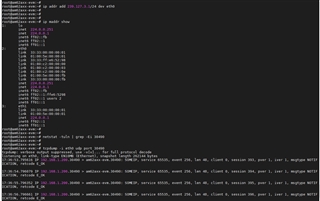Tool/software:
Test environment:
User customized development board
Linux Kernel 6.6
TI SDK 10.1
The server sends an offer message (UDP broadcast data) through Someip SD, and the NIC can receive it, because I can capture it through the tcpdump instruction, but the port is not monitored, so the data is not transmitted to the upper layer, resulting in communication failure, I did the following test to verify, please refer to the following figure

How can the kernel or TCP/IP stack solve this problem?

